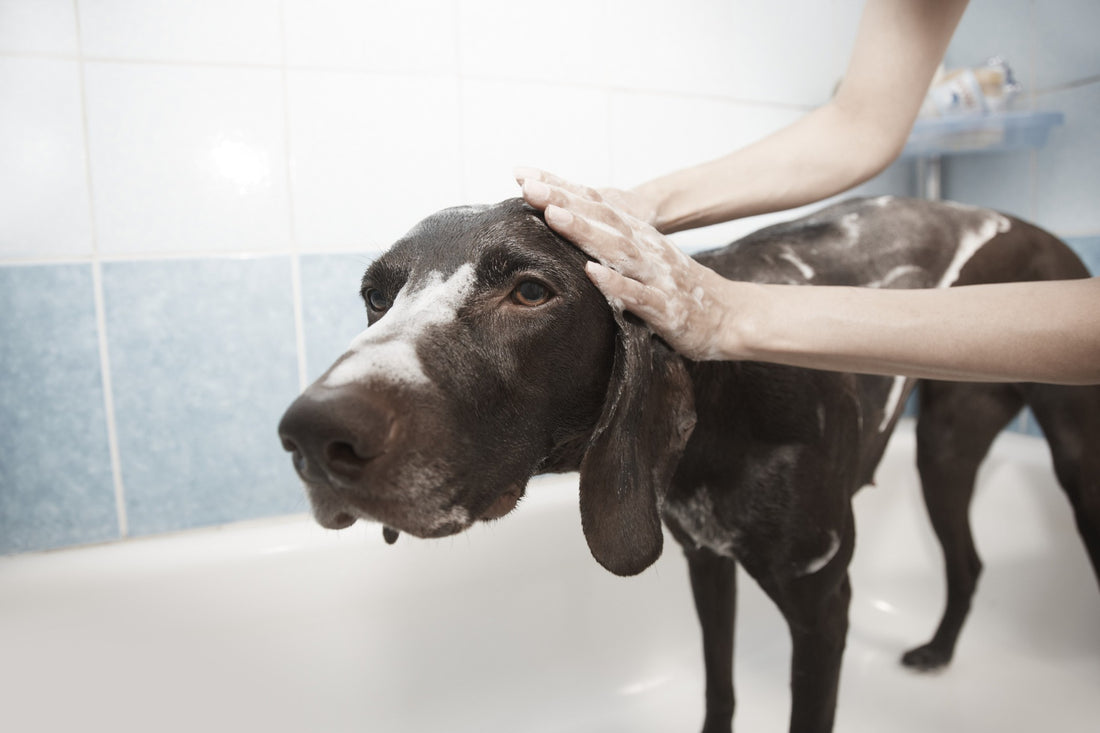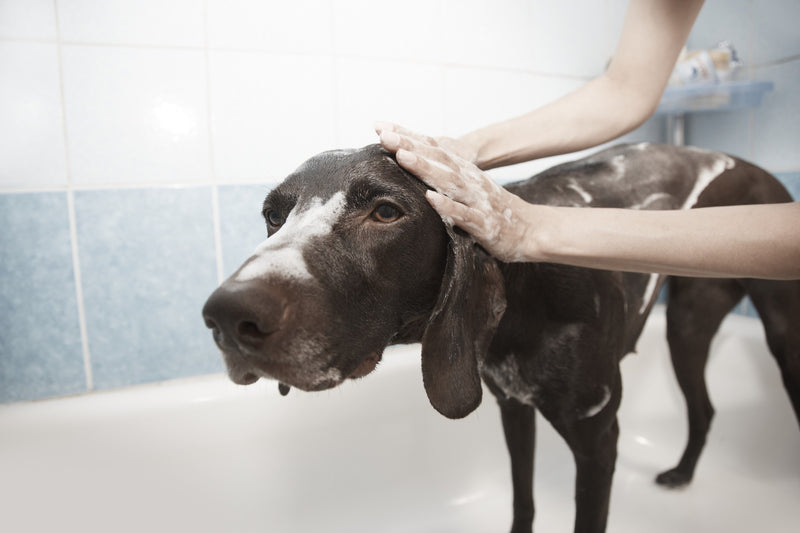The colder months can be a challenging time for pet owners, especially when it comes to keeping our furry friends happy and healthy.
The colder temperatures and dry air can lead to a host of problems, including dry skin and coat, mats and tangles, limited outdoor exercise, and an increased risk of health issues. If you're a pet owner, you may be wondering how to navigate these challenges and keep your pet looking and feeling their best during the colder months.
First, it's important to recognize that cold-weather grooming for pets requires a little extra effort and attention. You may need to brush your pet more frequently, use moisturizing products, and take extra care of their paws and skin. It's also important to keep an eye out for any potential health and grooming issues that may be magnified by the cold, such as frozen paws or skin irritation.
In this article, we'll provide some tips and recommendations for grooming pets to help you keep your furry friend looking and feeling their best all season long. Whether you have a dog, cat, or another type of pet, these tips will help you navigate the challenges of colder weather and keep your pet healthy and happy.
Brushing your pet regularly
One of the main challenges of cold weather grooming for pets is dealing with dry skin and coats. Cold, dry air can strip moisture from a pet's skin and coat, leading to dryness, flakiness, and irritation. This can be especially problematic for pets with long or thick coats, as they may be more prone to dryness and matting.
To prevent your pet from developing dry skin and a dry coat, it's important to brush them regularly. This removes loose fur and prevents matting. It will also help stimulate the production of natural oils which keep your pet's coat healthy and moisturized. You may also want to consider using a moisturizing shampoo and conditioner when you bathe your pet, as this can help add moisture to their skin and coat. Conditioner is particularly important for skin health. For your dog, it functions in the same way that lotion does for you—bringing relief to dry and itchy skin. Additionally, supplementing their diet with salmon oil or another oil high in Omega 3 can keep their skin healthy.
Though in general, the simplest way to maintain your pet’s coat health is to implement a regular brushing routine. Here’s how you can do it:
1. Gather your supplies: You'll need a brush or comb that is appropriate for your pet's coat type and length. For example, a slicker brush is a good choice for long-haired breeds, while a bristle brush is a good choice for short-haired breeds.
2. Get your pet comfortable: Have your pet sit or stand on a stable surface, and make sure they are relaxed and comfortable. If your pet is anxious or nervous, you may want to enlist the help of a second person to hold them still. A high-reward treat might also help hold their attention long enough to get a good brushing.
3. Start at the head: Begin brushing at the head and work your way down to the tail, using long, slow strokes. Be gentle and avoid pulling on tangles or mats, as this can cause discomfort for your pet.
4. Pay attention to areas prone to tangles: Pay extra attention to areas that are prone to tangles, such as behind the ears, under the legs, and around the tail. Use a comb to gently work out any tangles or mats, taking care not to pull on your pet's skin.
5. Reward your pet: After you've finished brushing your pet, give them a treat or two as a reward for being good
The frequency of brushing sessions will depend on your individual pet. For example, short-haired breeds typically only need to be brushed a few times a week to remove loose fur and dirt, while long-haired breeds may need to be brushed daily to prevent tangles and mats. Double-coated breeds, such as huskies and shepherds, have a dense, inner coat and a coarser, outer coat and may need to be brushed at least once a week to remove dead fur and prevent matting.
Additionally, while cats do groom themselves, to keep hairballs under control, your should brush them daily. This also removes loose fur and helps prevent matting. As for senior pets, they may have thinner, less dense coats and may need to be brushed less frequently. But of course, any brushing is better than no brushing, even if it’s only occasionally. So brush away!
Trimming your pet's nails
Trimming your pet's nails is an important aspect of their grooming and overall health, and it's something that you should do regularly to keep their paws healthy and comfortable. When the weather gets cold, it's especially important to trim your pet's nails because the colder, drier weather can cause their nails to grow faster and become more brittle. And when a pet's nails get too long, it can cause a number of problems.
For example, overgrown nails can cause pain and discomfort when your pet walks or runs, which can lead to a decrease in activity and potentially negative behaviors. Overgrown nails are also more prone to cracking and splitting, which can be painful and may lead to infections if left untreated. Plus, if a pet's nails are left untrimmed for too long, the nail bed can begin to grow over the nails, which can be painful and may require the assistance of a veterinarian to correct.
To avoid these problems, it's important to trim your pet's nails regularly to prevent overgrowth. However, it's also important to be careful not to cut into the quick (the blood vessels and nerves within the nail). It can be a stressful process for your pet and for you. If you are not sure about how to trim your pet's nails yourself, here is a good way to go about it.
1. Gather your supplies: You'll need a pair of nail clippers (either scissor-style or guillotine-style), a file or emery board, and a treat or two to reward your pet after the trimming is finished.
2. Get your pet comfortable: Have your pet sit or stand on a stable surface, and make sure they are relaxed and comfortable. If your pet is anxious or nervous, you may want to enlist the help of a second person to hold them still.
3. Identify the quick: Look at the base of your pet's nail and locate the quick, which is the off-color area that contains the blood vessels and nerves. If your pet's nails are white or clear, you may not be able to see the quick. In this case, you'll need to trim off a small amount of nail at a time and frequently check for the quick as you go.
4. Trim the nails: Using the appropriate type of clipper for your pet's size and nail thickness, clip off the tip of the nail, taking care not to cut into the quick. If you do accidentally cut the quick, apply a small amount of styptic powder to stop any bleeding.
5. Smooth the edges: If your pet's nails have rough edges after trimming, use a file or emery board to smooth them down.
6. Reward your pet: After you've finished trimming your pet's nails, give them a treat or two as a reward for being a good sport. This will help reinforce the positive association with nail trimming and make it easier for your pet to tolerate in the future.
And this doesn’t just apply to dogs and small animals. It's generally recommended to trim a cat's nails regularly as well! Like dogs, cats' nails can grow too long and cause problems, such as pain and discomfort when moving about, cracking, splitting, and overgrowth of the nail bed. By trimming your cat's nails regularly, you can help prevent these problems and keep their paws healthy and comfortable.
Trimming a cat's nails can be a bit trickier than trimming a dog's nails, as cats are often more sensitive and may be more resistant to having their paws handled. It's a good idea to start trimming your cat's nails at a young age, so they get used to the process and are more willing to cooperate as they get older. It's also a good idea to have treats on hand to reward your cat after the trimming is finished, as this will help reinforce the positive association with nail trimming and make it easier for your cat to tolerate in the future.
If you're not comfortable trimming your pet's nails, or if you're not sure how to do it, don't hesitate to seek the help of a veterinarian or a professional groomer. Our low-cost vet clinics are a great option if you live near one of our stores. You can check our clinic schedule on the services page. Any vet, groomer, or vet tech would be able to show you how to properly trim your pet's nails and keep them healthy. So, make sure to add nail trimming to your pet's grooming routine and keep their paws happy and healthy.
Winter Bath Time
To keep your pet's coat clean and well-groomed, it's important to bathe them regularly. How often you need to bathe your pet will depend on their breed and specific needs. Bathing your pet helps remove dirt, debris, and loose fur from their coat, which can help prevent tangles and mats and keep their coat clean and healthy. Plus, using a moisturizing shampoo and conditioner can help prevent dry, flaky skin and keep your pet's skin and coat moisturized and healthy.
And let's not forget about the warm water and massaging action of bathing, which can help relax your pet's muscles and reduce stress, improving their overall well-being. It’s also great from a bonding perspective. Bath time is quality time and a great opportunity to show your furry friend love and affection.
Here's how to go about bath time:
1. Gather your supplies: You'll need a pet-safe shampoo and conditioner, a towel, and a treat or two to reward your pet after the bath is finished.
2. Get your pet comfortable: Have your pet sit or stand on a stable surface, and make sure they are relaxed and comfortable. If your pet is anxious or nervous, you may want to enlist the help of a second person to hold them still.
3. Wet your pet's coat: Using lukewarm water, wet your pet's coat thoroughly. Be sure to avoid getting water in their ears and eyes.
4. Apply shampoo: Apply a small amount of pet-safe shampoo to your pet's coat, starting at the head and working your way down to the tail. Lather the shampoo into your pet's coat, taking care not to miss any areas.
5. Rinse thoroughly: Rinse your pet's coat thoroughly to remove all soap and suds. Be sure to rinse thoroughly to avoid leaving any soap residue on your pet's skin, which can cause irritation.
6. Apply conditioner: If you're using a conditioner, apply it to your pet's coat and work it in thoroughly.
7. Towel dry: Use a towel to gently blot your pet's coat to remove excess water. Be sure to pay extra attention to areas that are prone to tangles, such as behind the ears, under the legs, and around the tail.
8. Reward your pet: After you've finished bathing your pet, give them a treat or two as a reward for being a good sport. This will help reinforce the positive association with bath time and make it easier for your pet to tolerate in the future.
Remember, it's important to use a pet-safe shampoo and conditioner when bathing your pet to avoid causing irritation or dryness. If you're not sure what products to use, don't hesitate to seek the help of a veterinarian or
In addition to regular bathing every 4-6 weeks (unless your dog gets filthy, or has something like a yeast infection), it's also a good idea to use a moisturizing shampoo or conditioner to help prevent dry, flaky skin.
If you notice any unusual changes in your pet's coat, or if you're concerned about their skin or coat health, don't hesitate to consult with a veterinarian for advice and guidance. They can help you determine the cause of any problems and recommend a course of action to keep your pet healthy and comfortable.
Protecting Your Pet’s Paws from the Cold
While here in Southern California, we don’t have to worry about the effects of extreme cold (like frostbite), but that doesn’t mean the cold won’t be uncomfortable or even painful for your pet’s feet. Protecting your pet's paws is an important aspect of their overall health and well-being, and it's especially important in the winter when the colder, dryer weather can cause their paws to become dry and cracked. By taking care of your pet's paws, you can help prevent discomfort and irritation and keep their paws healthy and pain-free.
So, what can you do to protect your pet's paws?
1. Keep their paws clean and dry: After walks, be sure to wipe your pet's paws with a towel to remove any water, ice, salt, or other harmful substances. This will help keep their paws clean and dry and prevent any irritation or discomfort.
2. Use balm or petroleum jelly: Before heading outside, consider applying a thin layer of paw balm, bag balm, or petroleum jelly to your pet's paws. This will help moisturize and protect their paws from the cold, making it easier for them to walk on icy surfaces.
3. Use booties: If you're really concerned about your pet's paws in the cold, consider using booties to help keep their paws warm and dry. There are several different types of booties available, so you can choose the ones that best suit your pet's needs.
By following these tips, you can help protect your pet's paws from the cold and keep them healthy and comfortable during the colder months.
Wrapping Up
Taking care of your pets in the cold requires a little extra effort and attention—even in Southern California. While the weather in our neck of the woods is generally milder than in other parts of the country, there are still challenges that pet owners need to consider, such as dry air and the potential for colder temperatures in certain areas. By following some simple tips and recommendations, you can help prevent dry skin and coat, mats and tangles, limited outdoor exercise, and an increased risk of health issues. Be sure to brush your pet regularly to remove loose fur and prevent matting, use moisturizing products, and take extra care of their paws and skin.
By following these tips and being mindful of the specific challenges that pets in San Diego may face, you can help keep your pet looking and feeling their best all year round. With a little extra care and attention, you can help ensure that your furry friend stays happy, healthy, and comfortable no matter what the weather has in store.


